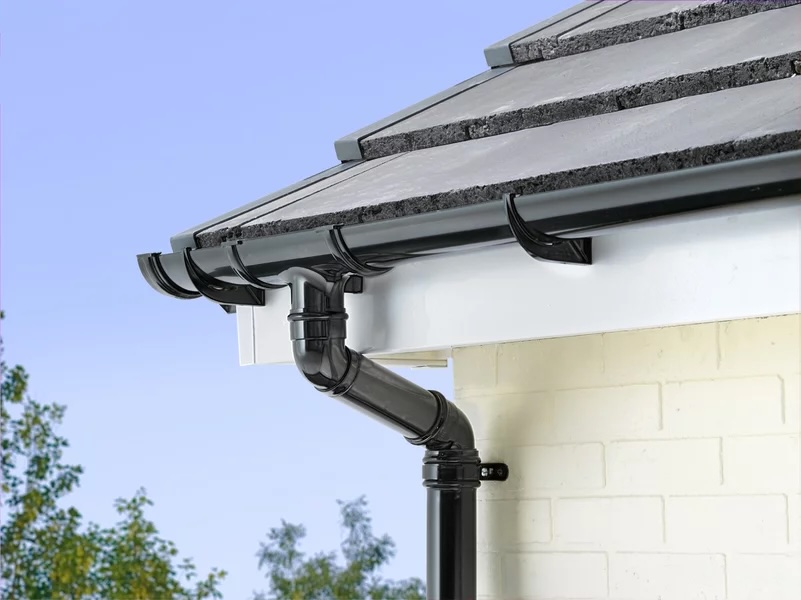
Gutter Guards
Add a review FollowOverview
-
Founded Date October 13, 1993
-
Sectors Telecommunications
-
Posted Jobs 0
-
Viewed 13
Company Description
14 Smart Ways To Spend Your Left-Over Drainage Budget

Understanding Roof Drainage: Key Concepts, Methods, and Best Practices
The roof plays an essential function in the protection and longevity of a building. One vital element of roof design and maintenance is reliable roof drainage. Appropriate drainage systems prevent water accumulation, which can lead to extreme structural damage and early degeneration. This article delves into the importance of roof drainage, common methods, products used, and the very best practices to ensure effective water management.

Significance of Roof Drainage
Roof drainage is important for several reasons:
-
Preventing Water Accumulation: Standing water can lead to leaks, structural damage, and possible mold growth.
-
Enhancing Building Longevity: Proper drainage assists mitigate wear and tear on roofing materials, consequently extending the roof’s life.
-
Preserving Aesthetic Appeal: A properly designed drainage system adds to the overall look of the structure, avoiding unsightly water accumulation.
-
Mitigating Ice Dams: In cooler environments, efficient roof drainage can assist avoid the development of ice dams, which can harm gutters and roofing products.
-
Ecological Responsibility: Efficient water management through roof drainage can minimize runoff and reduce the environmental effect.
Types of Roof Drainage Systems
Numerous approaches can be used to guarantee efficient roof drainage. The most typical types consist of:
1. Gravity Drainage
This technique utilizes gravity to direct water away from the roof surface.
-
Internal Drains: Located within the structure’s structure, these drains pipes use piping systems to get rid of water straight to the ground or the structure’s drainage system.
-
Roof Drainage Leaders: These are vertical pipelines used to bring rainwater from the roof to the ground.
2. Slope Drainage
Producing slopes in the roof structure ensures water flows towards designated drainage points.
-
Favorable Drainage: A pitch or slope directs water to particular drains or scuppers.
-
Boosted Slope Systems: These typically feature structured designs to improve water flow effectiveness.
3. Gutter Systems
Gutters gather water that runs off the roof edges, directing it securely away.
-
K-Style Gutters: Popularly utilized due to their aesthetic and practical benefits.
-
Half-Round Gutters: Known for their timeless appearance and effective water flow.
4. Trough Drainage
This technique includes wide, shallow channels created to obstruct water before it builds up.
-
Trench Drains: Ideal for big flat roofs, these systems often include grates to keep particles out while carrying water.
-
Catch Basins: Positioned tactically to gather rainwater and filter out debris.
5. Green Roofing Systems
These involve vegetation on roofs that assist in water absorption and management.
-
Extensive Green Roofs: Lower maintenance and require less soil depth.
-
Intensive Green Roofs: Require more maintenance with deeper soil and a wider range of plants.
Key Materials for Roof Drainage
The materials utilized for roof drainage systems considerably impact their sturdiness and effectiveness.
| Product Type | Benefits | Downsides |
|---|---|---|
| PVC | Light-weight, corrosion-resistant | Prone to UV damage |
| Cast Iron | Resilient, sound-dampening | Much heavier, vulnerable to rust |
| Aluminum | Lightweight, resistant to corrosion | Can be dented easily |
| Stainless-steel | Incredibly resilient, corrosion-resistant | Costly |
| Concrete | Long-lasting, robust | Heavy, can break without maintenance |
Best Practices for Roof Drainage
To guarantee the durability and effectiveness of roof drainage systems, consider the following best practices:
-
Regular Inspection: Conduct regular evaluations to determine debris accumulation, blockages, or structural damage.
-
Maintain Clear Drains and Gutters: Promptly remove leaves, dirt, and other obstructions to guarantee water flows freely.
-
Set Up Properly Sized Systems: Roof drainage systems ought to be sufficiently sized for the structure’s needs and local rains patterns.
-
Consider Local Weather Conditions: Design drainage systems thinking about the local climate to prevent flooding and other drainage concerns.
-
Make Use Of Professional Services: Hiring experienced professionals for installation and maintenance can considerably improve efficiency.
Frequently Asked Questions About Roof Drainage
Q1: What are the signs of inefficient roof drainage?
Signs of inefficient roof drainage consist of leakages, water spots on ceilings, mold development, and sagging ceilings or walls.
Q2: How frequently should roof drainage systems be inspected?
It is recommended to examine roof drainage systems a minimum of twice a year, ideally in spring and fall, and after considerable storms.
Q3: Can I set up a roof drainage system myself?
While minor maintenance jobs can be performed by house owners, it is best to work with professionals for installation to ensure it fulfills local structure codes and functions correctly.
Q4: What should I do if I discover clogs in my roof drainage system?
If blockages are found, they need to be cleared instantly. If the blockage is not easily accessible or workable, it may be best to consult a professional.
Q5: Are green roofing systems reliable for drainage?
Yes, green roofs can be very effective for drainage as they take in rainwater, decreasing overflow while providing insulation and visual advantages to structures.
Roof drainage is an essential element in securing buildings against water damage. By comprehending the kinds of drainage systems, the materials utilized, and best practices for maintenance, homeowner can considerably boost the longevity and performance of their roofing systems. A reliable drainage system not just avoids expensive repairs but also contributes to a building’s total sustainability. Investing time and resources into effective roof drainage is a financial investment in the building’s future.


